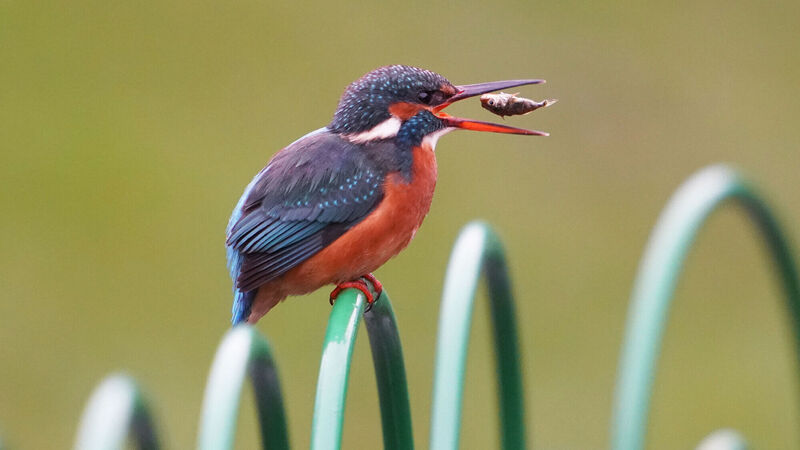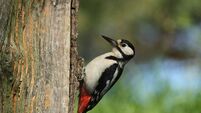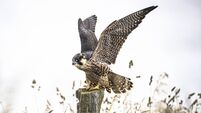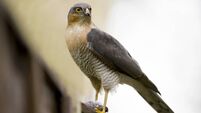Birds of Ireland: Kingfisher

A kingfisher is smaller than a starling and both sexes look similar. Picture: Owen Humphreys/PA Wire
Kingfishers are around 16-18cm long with a wingspan of 24-26cm. They are a common breeding species found here all year round in wetland areas.










